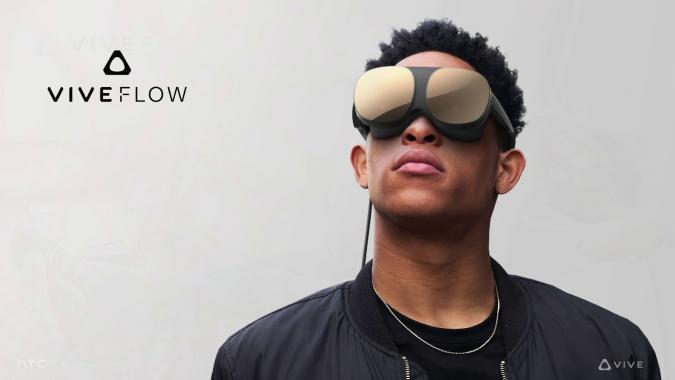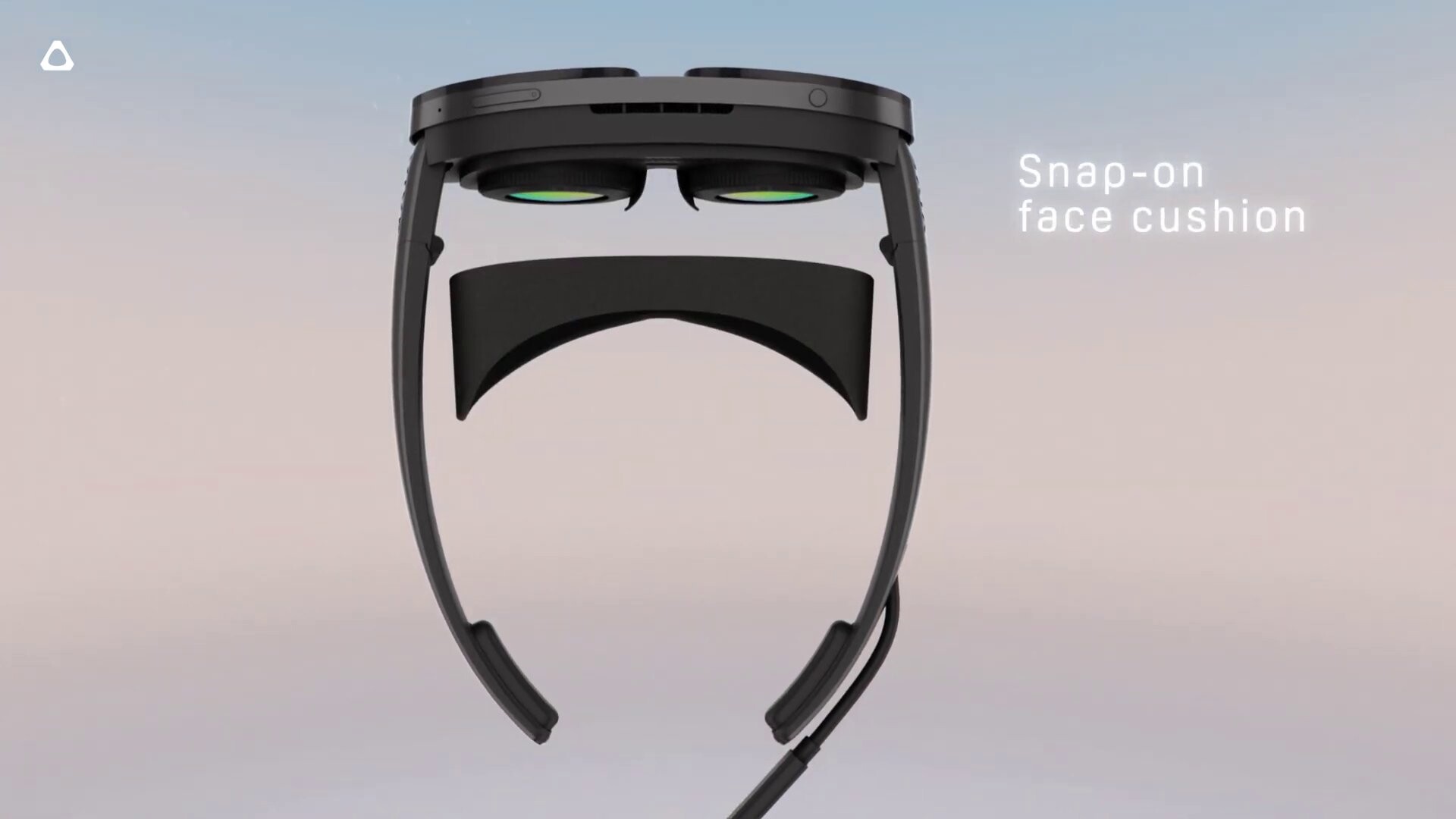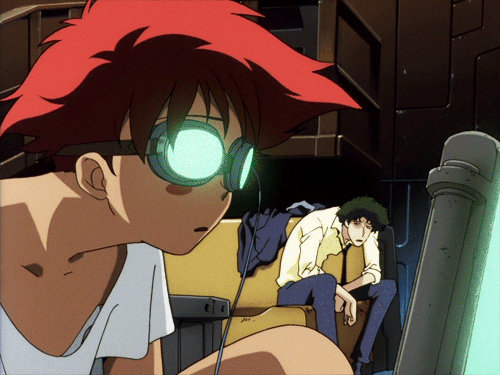
Nice overview.
If only you could combine the best things about the Quest 2 (wireless + wired), Reverb G2 (sensational resolution / clarity) and Index (controllers).
We're getting there tho.
If only you could combine the best things about the Quest 2 (wireless + wired), Reverb G2 (sensational resolution / clarity) and Index (controllers).
We're getting there tho.

I've been on an accidental next-gen VR info binge these past few days thanks to the almighty YT algorithm and the future is looking bright. Both figuratively and literally. OLED microdisplays, considerably smaller in size and supposedly much higher in brightness, are set to replace the LCD panels currently used in most consumer VR headsets. We're going back to OLED m8s, and soon.
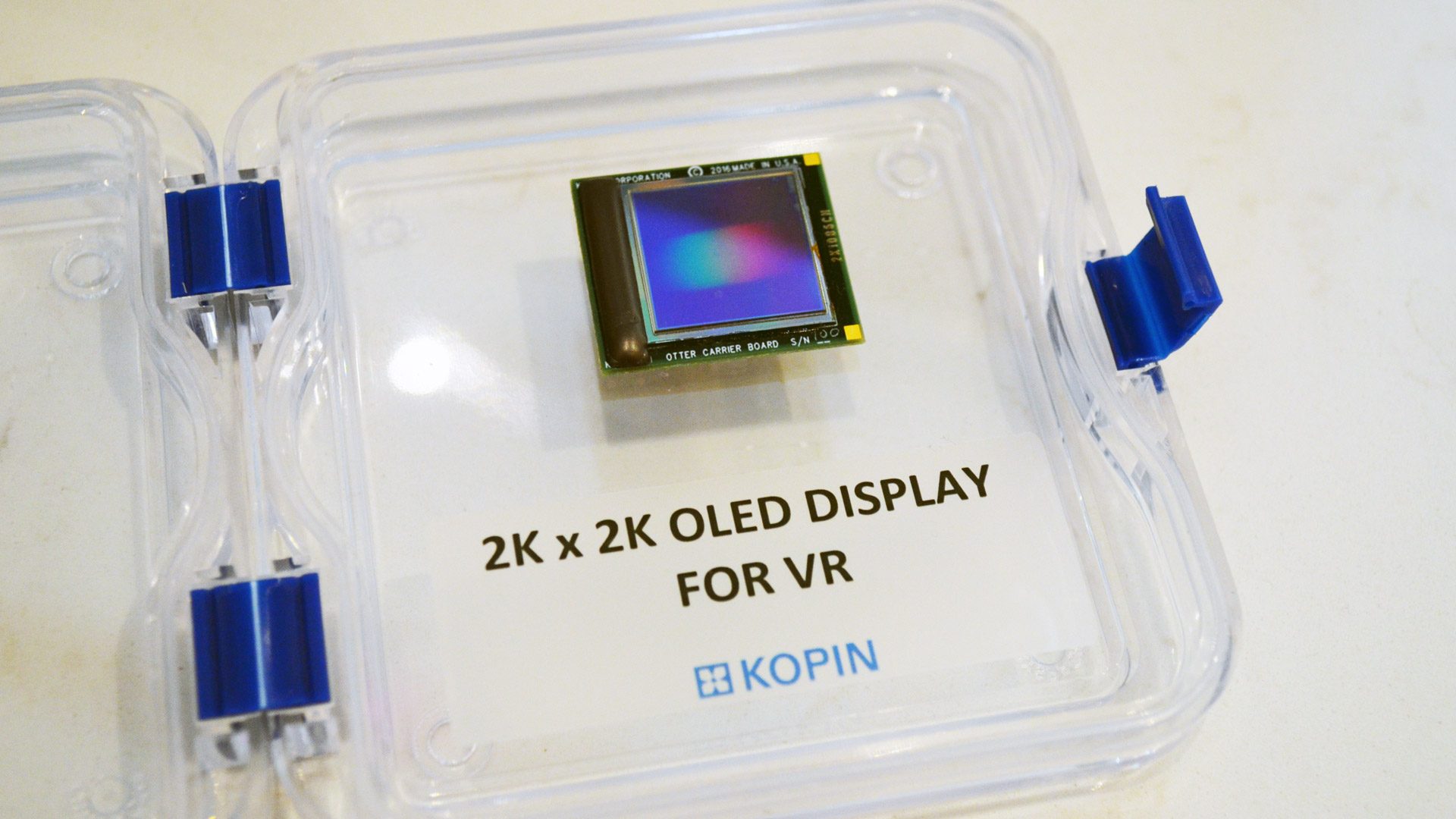
These have been in the works and demoed for years and I guess the time is finally ripe. The main problem to solve for VR use isn't so much the display tech itself (4k x 4k resolution is already a thing), but rather the highly specialized lenses that are needed to embiggen and project the image into your eyeballs. Either by reflecting / reprojecting at an angle or with advanced pancake lenses, which will hopefully lead to slimmer headsets.
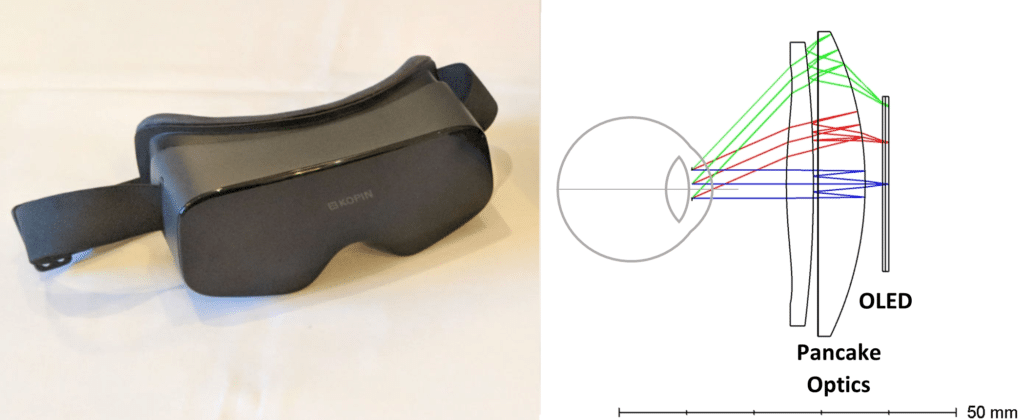
It would appear that the big players in VR space are now able to source these microdisplays and lenses in sufficient quantities and at low enough cost, because if the people who are obsessively combing through VR patents and firmware & kernel updates have it right ... at least Valve's Index 2 aka Deckard is going to feature OLED microdisplays ... and it's now looking likely that PSVR 2 will as well. Maybe.
Tracking is the other ever-evolving VR tech. As far as positional and controller tracking, everyone is gonna be doing inside out. Valve are kinda sticking with their lighthouse tech, only they're moving it onto the headset itself. Oculus is putting cameras and silicon running basic Android into the controllers (goodbye battery life?), which will be able to track themselves and do it better, like when positioned behind your back.

Eye tracking / foveated rendering is also on its way to become a standard feature. Sony is supposedly working on IR-based eye tracking with emitters and receivers that are integrated directly onto the OLED microdisplay, something they've shown and published papers about. 2000 x 2040 resolution keeps coming up in regards to PSVR 2 (apparently it was quoted to developers at some Sony conference) and nerds are speculating that the pixels that are missing to form a 2048 x 2048 OLED microdisplay is space reserved for those IR diodes / sensors.
So to recap and guesstimate ...
Oculus Quest 2 Plus:
- likely to be announced at Oculus Connect later this month
- dual-layer LCD display, same specs as the current Quest 2 display
- eye tracking of some sort
- same Snapdragon XR2 processor as Quest 2
- possibly new controllers / tracking (see below)
Oculus Quest Pro:
- unlikely to be announced at Oculus Connect, but supposedly a 2022 product
- either OLED microdisplays (2k x 2k @ 90hz rumoured) or a dual-layer LCD screen
- 7 cameras on the headset compared to the 4 on the Quest 2; a pair of cameras for upper face tracking, 2 for lower face tracking, 2 infrared ones and a 4k 120hz color camera for passthrough
- controllers without halo tacking rings, 3 cameras per controller, tracking processing done (partly) in the controllers
- extra fan to keep it cool
Valve Deckard:
- OLED microdisplays
- lighthouse-like inside out tracking
- standalone headset, also capable of doing PCVR
- something called 'VRLink', which quite obviously points to PC wireless connectivity
- lots of crazy patent-derived tech like varifocal lenses, eye and head tracking for predictive rendering
PSVR 2:
- OLED microdisplays (highly speculative at this point)
- eye tracking of some sort
- whatever Sony already told us about
Not gonna lie, I'm kinda glad I didn't get a Quest 2.

These have been in the works and demoed for years and I guess the time is finally ripe. The main problem to solve for VR use isn't so much the display tech itself (4k x 4k resolution is already a thing), but rather the highly specialized lenses that are needed to embiggen and project the image into your eyeballs. Either by reflecting / reprojecting at an angle or with advanced pancake lenses, which will hopefully lead to slimmer headsets.

It would appear that the big players in VR space are now able to source these microdisplays and lenses in sufficient quantities and at low enough cost, because if the people who are obsessively combing through VR patents and firmware & kernel updates have it right ... at least Valve's Index 2 aka Deckard is going to feature OLED microdisplays ... and it's now looking likely that PSVR 2 will as well. Maybe.
Tracking is the other ever-evolving VR tech. As far as positional and controller tracking, everyone is gonna be doing inside out. Valve are kinda sticking with their lighthouse tech, only they're moving it onto the headset itself. Oculus is putting cameras and silicon running basic Android into the controllers (goodbye battery life?), which will be able to track themselves and do it better, like when positioned behind your back.

Eye tracking / foveated rendering is also on its way to become a standard feature. Sony is supposedly working on IR-based eye tracking with emitters and receivers that are integrated directly onto the OLED microdisplay, something they've shown and published papers about. 2000 x 2040 resolution keeps coming up in regards to PSVR 2 (apparently it was quoted to developers at some Sony conference) and nerds are speculating that the pixels that are missing to form a 2048 x 2048 OLED microdisplay is space reserved for those IR diodes / sensors.
So to recap and guesstimate ...
Oculus Quest 2 Plus:
- likely to be announced at Oculus Connect later this month
- dual-layer LCD display, same specs as the current Quest 2 display
- eye tracking of some sort
- same Snapdragon XR2 processor as Quest 2
- possibly new controllers / tracking (see below)
Oculus Quest Pro:
- unlikely to be announced at Oculus Connect, but supposedly a 2022 product
- either OLED microdisplays (2k x 2k @ 90hz rumoured) or a dual-layer LCD screen
- 7 cameras on the headset compared to the 4 on the Quest 2; a pair of cameras for upper face tracking, 2 for lower face tracking, 2 infrared ones and a 4k 120hz color camera for passthrough
- controllers without halo tacking rings, 3 cameras per controller, tracking processing done (partly) in the controllers
- extra fan to keep it cool
Valve Deckard:
- OLED microdisplays
- lighthouse-like inside out tracking
- standalone headset, also capable of doing PCVR
- something called 'VRLink', which quite obviously points to PC wireless connectivity
- lots of crazy patent-derived tech like varifocal lenses, eye and head tracking for predictive rendering
PSVR 2:
- OLED microdisplays (highly speculative at this point)
- eye tracking of some sort
- whatever Sony already told us about
Not gonna lie, I'm kinda glad I didn't get a Quest 2.

By Diego! Go To PostWonder what category of porn she is watching
Don't these require headphones?
There's headphones in it

They're probably shit though. Especially if you want to watch big mommy milkers in your face

Lone Echo 2 is out now. Its the final "Rift exclusive" game. Although it will probably come out on a Quest like device when they have the graphical capability.

Really disappointing that there’s no wireless alternatives to the Quest 2 is the same budget (or even close).
I’d really like to upgrade from my Rift S, but I’d ideally want to upgrade away from Facebook’s software entirely.
I’d really like to upgrade from my Rift S, but I’d ideally want to upgrade away from Facebook’s software entirely.

Got an Oculus Quest 2. Big upgrade on the Rift apart from the head strap and speakers which are much, much worse.
I found Virtual Desktop worked better than Air Link for playing PCVR games but my i5 4690k/GTX 970 PC is really so old and outdated that I am kind of surprised that it works at all.
I found Virtual Desktop worked better than Air Link for playing PCVR games but my i5 4690k/GTX 970 PC is really so old and outdated that I am kind of surprised that it works at all.

So lads whats the verdict on PS VR2? Whats the best game to get with it? Any free games/apps worth picking up as well?

I think it's gud, but I need new Astrobot. Not sure about anything that's free on it, but at least it has demos.

I'm tempted to get a quest 3, what do people think of it? what are general thoughts on vr landscape? a good time to jump in? when is valve's headset expected to release roughly?
psvr2 would have been a consideration but support seems really really poor. would love an astrobot pc port tho
psvr2 would have been a consideration but support seems really really poor. would love an astrobot pc port tho

The Quest 3 is by far Meta's best headset to date. There's really nothing in that price range that can compete. And there likely won't be, now that Pico have thrown in the towel and will focus on measuring dicks with Apple's Vision Pro with their next VR hardware release.
Q3 is a great package, though far from perfect. You'll basically need to spend another 50-100€$ on a good aftermarket head strap with battery. The screens, while sufficiently high-res, are LCD, so contrast isn't amazing. Other than that tho ... the pancake lenses it uses are fantastic ... the XR2 Gen 2 chip is power hungry and a big upgrade over Gen 1 ... you get really good controllers with inside-out tracking ... decent pass-through video quality ... all the Meta exclusive and SteamVR / PCVR games, which you can stream wirelessly to your Q3 via VirtualDesktop or Steam Link.
Now is as good a time as any to jump in, I'd say. Waiting for Valve's Deckard is a fool's game, as I can attest to. Nobody knows when it's coming and what kind of contraption it'll be (everything seems to point to a hybrid standalone / PCVR headset) or how Valve will position it. Even the things data miners were once very confident in, like OLED microdisplays being a given, don't seem so certain anymore. Hopes and dreams is all it is.
I think Q3 is and will continue to be the best all-round VR headset throughout 2024, which will see the birth of Samsung's Vision Pro competitor and at least another couple of 2000€$+ prosumer focused mixed reality headsets. Second half of 2025 is probably when we'll see XR3 and OLED-on-silicon trickle down to sub-600$€ headsets, so I don't think waiting is the play, if you want to experience VR in the next 12-18 months.
There are some very interesting, compact, high-spec'd PCVR-only headsets coming, like the Bigscreen Beyond (already shipping to customers) and Somnium VR1, but that's wired, enthusiast-level stuff that requires base stations for tracking. Not something I'd recommend to a VR virgin.
You either buy a Quest 3, if you're more or less serious about jumping in, or possibly wait for the cheaper Quest 3 Lite in Q3/Q4 2024, if you just want to dip your toes while you wait for that illusive perfect VR headset for the masses. If the latter, a Quest 2 / Pico 4 is a good option right now.
Q3 is a great package, though far from perfect. You'll basically need to spend another 50-100€$ on a good aftermarket head strap with battery. The screens, while sufficiently high-res, are LCD, so contrast isn't amazing. Other than that tho ... the pancake lenses it uses are fantastic ... the XR2 Gen 2 chip is power hungry and a big upgrade over Gen 1 ... you get really good controllers with inside-out tracking ... decent pass-through video quality ... all the Meta exclusive and SteamVR / PCVR games, which you can stream wirelessly to your Q3 via VirtualDesktop or Steam Link.
Now is as good a time as any to jump in, I'd say. Waiting for Valve's Deckard is a fool's game, as I can attest to. Nobody knows when it's coming and what kind of contraption it'll be (everything seems to point to a hybrid standalone / PCVR headset) or how Valve will position it. Even the things data miners were once very confident in, like OLED microdisplays being a given, don't seem so certain anymore. Hopes and dreams is all it is.
I think Q3 is and will continue to be the best all-round VR headset throughout 2024, which will see the birth of Samsung's Vision Pro competitor and at least another couple of 2000€$+ prosumer focused mixed reality headsets. Second half of 2025 is probably when we'll see XR3 and OLED-on-silicon trickle down to sub-600$€ headsets, so I don't think waiting is the play, if you want to experience VR in the next 12-18 months.
There are some very interesting, compact, high-spec'd PCVR-only headsets coming, like the Bigscreen Beyond (already shipping to customers) and Somnium VR1, but that's wired, enthusiast-level stuff that requires base stations for tracking. Not something I'd recommend to a VR virgin.
You either buy a Quest 3, if you're more or less serious about jumping in, or possibly wait for the cheaper Quest 3 Lite in Q3/Q4 2024, if you just want to dip your toes while you wait for that illusive perfect VR headset for the masses. If the latter, a Quest 2 / Pico 4 is a good option right now.

thanks, I appreciate all of the info. the quest 3 does look really good, think I'll go for it. just wish there was an oled model. I wouldn't mind waiting if I knew valve's next headset would release 2024, but definitely feels like a trap to wait for that lol.

By Diego! Go To PostSo lads whats the verdict on PS VR2? Whats the best game to get with it? Any free games/apps worth picking up as well?
did you end up getting it? every now and then a gt7 video pops up on youtube, and i immediately think about pulling the trigger...


